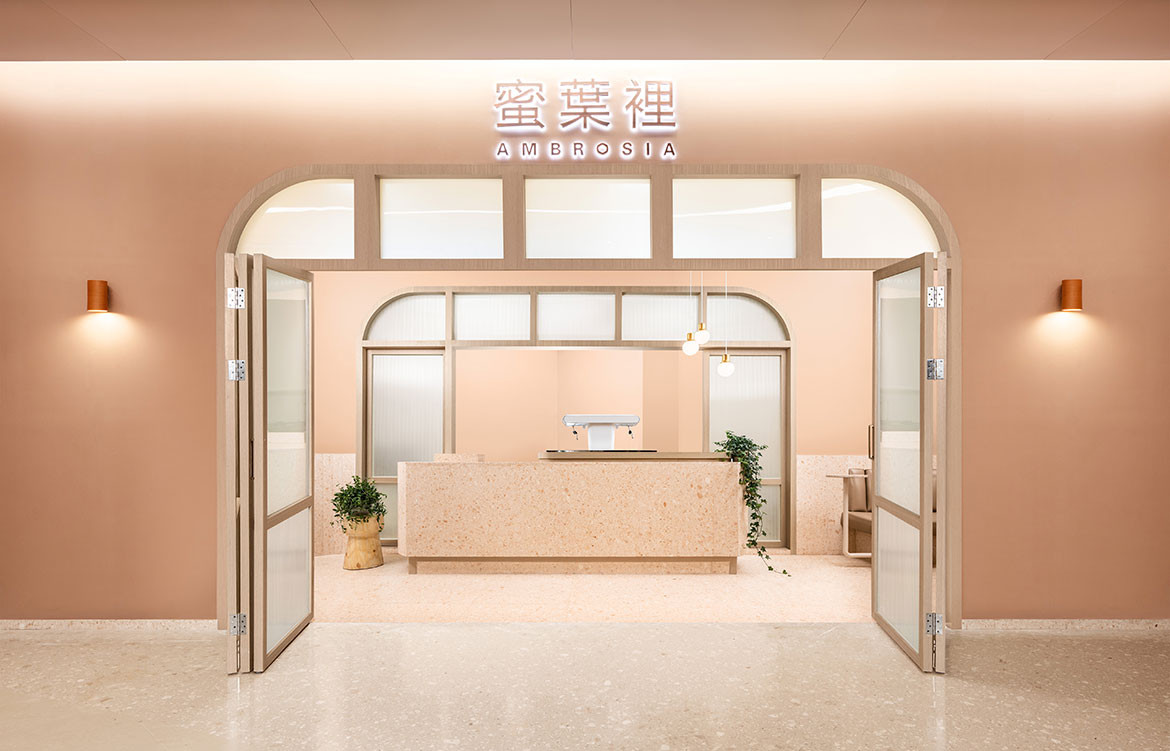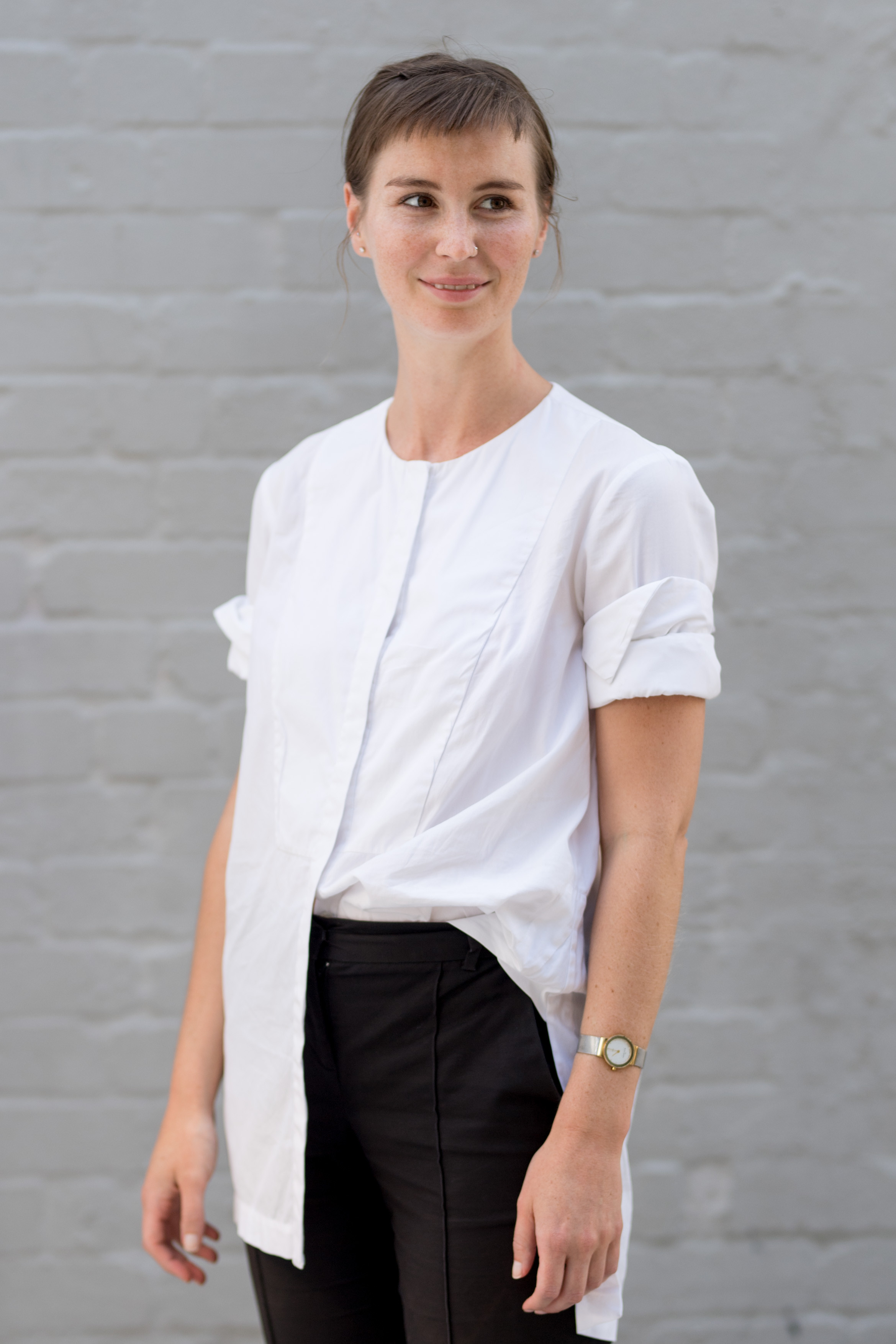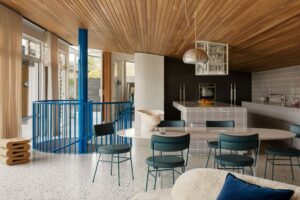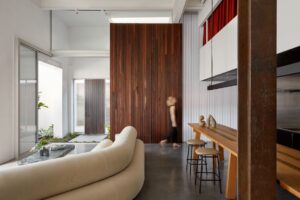Within a shopping centre in an up and coming area of Shenzhen, China, 蜜葉裡 Ambrosia allows its patrons to feel fresh and free like they are about to enjoy their best of cup of tea. 蜜葉裡 Ambrosia is a new bubble tea brand that values health, balance and happiness so it was important that the design and atmosphere of its physical space mirror such an ethos.
Multi-disciplinary design studio Biasol has a number of exceptional food and beverage spaces to their name. In fact, Pentolina in Melbourne’s CBD was recently shortlisted in the 2019 INDE.Awards Social Space category. The studio’s expertise and ingenuity in designing these spaces continue to present the unexpected to enthusing clients and patrons alike.

For example, you might not think bubble tea and Chinese architecture have much in common – but they are two almost opposing forces that have been heavily drawn on as inspiration for the interior design and branding of the space.
“The minimalist form is based on the traditional Chinese courtyard houses [siheyuan] and architectural gateways [paifang] to achieve a sense of flow,” says Jean-Pierre Biasol. The wooden arches that frame the entry and border the grooved glass panels play the role of the paifang, while the long and narrow interior mirrors that of the siheyuan residences.
The soft pink palette and use of handcrafted techniques create a calming, sensory-rich experience that recalls the simplistic yet impactful ritual of drinking tea.

Rounded corners and a tan leather upholstered banquette creates the illusion of space in a site that would otherwise be considered quite compact. Pavlova terrazzo tiles from Fibonacci Stone line the floors and seamlessly extends up to the walls before recurring again on the counter and tables. The soft pink palette and use of handcrafted techniques create a calming, sensory-rich experience that recalls the simplistic yet impactful ritual of drinking tea.
Simplicity is key, not just in the design of the shop but fundamentally in the kitchen too. While the rise and rise of bubble tea has seen the sweetness factor of the cult beverage ascend an endless staircase, 蜜葉裡 Ambrosia is dedicated to the use of sensory loose-leaf teas paired with the finest natural honey for an authentic tea taste forgoing the use of refined sugar.

“We translated the values of health, balance and happiness into the design of the venue with a material and colour palette as sweet and refreshing as bubble tea,” adds Jean-Pierre.
A neon white light on the wall reads Be my best cup of tea echoes this sentiment and is repeated on takeaway cups; so even if you can’t stay to enjoy your best cup of tea, you can take a little bit of that 蜜葉裡 Ambrosia atmosphere with you anywhere.
Biasol
biasol.com.au
Photography by James Morgan




We think you might also like Pentolina by Biasol







